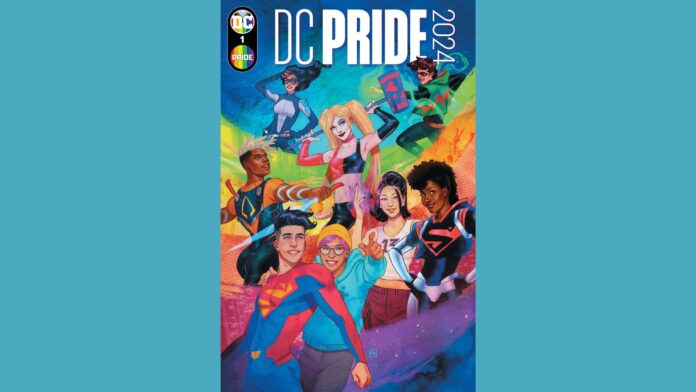As the LGBTQ+ community ramps up for June Pride celebrations, this is the time of year when supportive corporate entities unveil their programs aimed at expressing their commitment to diversity and inclusivity, specifically targeting LGBTQ+ people. One of the most interesting examples of this is “DC Pride,” an annual publication put out by DC Comics, publishers of the iconic Superman, Batman, Wonder Woman and many others.
On May 29, DC released “DC Pride 2024,” a collection of slice-of-life stories featuring many of the LGBTQ+ characters the company has developed over the last several years. In fact, DC has long been a leader in promoting LGBTQ+ representation, even as far back as the 1980s, long before rival Marvel began inching toward representation. Even today, DC is the most prominent, including representation in even their most prominent franchises, like Superman and Batman.
An interesting aspect of “DC Pride 2024” is it doesn’t focus primarily on the high-profile examples like Batwoman or Robin (though the gay son of Superman makes an appearance). Instead, the book focuses, not just on the diversity inherent in being LGBTQ+, but on the diversity of backgrounds LGBTQ+ people can spring from. There are aliens, Atlanteans, villains and children of heroes. It reflects the diversity of our real-life origins in the context of the fantastic DC universe.
The eight stories contained herein, crafted by eight different writers and artists, looks at what life is like for the various LGBTQ+ characters. There is actually little standard comic book action. Instead, the focus tends to be on everyday relatable emotional issues.
For instance, in the story featuring the gay teenage son of Superman, Jon Kent and his boyfriend meet up with some friends for a night on the town. Included in this group is another young hero called the Ray, who himself has recently come out. In contrast to Jon, whose parents Lois and Clark are extremely loving and supportive, the Ray’s parents reacted extremely negatively to their son being gay. This, of course, leaves the Ray emotionally troubled and insecure about his identity as a gay person and unsure about his place in the world. The friends rally to his support, assuring him that they are also his family, that he has a place to belong—something anyone freshly out needs to know.
The story featuring former Batman villain Poison Ivy takes a delightfully acerbic turn. Ivy and her girlfriend are visiting an alien trading post (don’t ask) populated by wildly diverse beings from different worlds. While there, Ivy encounters a group of evangelical homophobes from Earth (just go with it). The aliens just don’t get the evangelicals’ obsession with genitalia, but it’s none of their concern. However, when the homophobes confront Ivy, she uses her power over plant life to fulfill what is no doubt a common LGBTQ+ revenge fantasy—infecting the evangelicals with a hallucinogen that makes them confront their deepest fears about themselves. And what is usually a homophobe’s deepest fear?
Perhaps the most heartfelt and emotionally resonant story is an autobiographical piece by Phil Jimenez. Jimenez, who has been openly gay his entire career, gained prominence in the ’90s as writer and artist for Wonder Woman. In this story, Jimenez considers his life as a queer comics creator, and the value fantasy worlds have held for him his entire life. He thinks how valuable fantasies are for kids growing up queer—and for adults, too. He realizes it’s important to imagine a place where one belongs because of one’s difference, since you have to imagine such a world before you can create it in reality.
Realms of the imagination have always held a special appeal to LGBTQ+ people, be it comic book superheroes, Tolkienesque high fantasy, or “Star Trek” science fiction. As Jimenez says, it enables queer people of all diverse variations to imagine themselves in a world where their differences are valued, and where they can belong. The worlds of imagination of the queer superheroes in “DC Pride” are both inspirational and aspirational, enabling LGBTQ+ people to imagine that they have value and a place in the world, be it real or fantastic.

